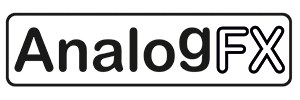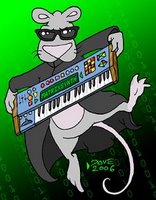Showing posts sorted by date for query Thought-Forms. Sort by relevance Show all posts
Showing posts sorted by date for query Thought-Forms. Sort by relevance Show all posts
Sunday, September 21, 2025
Album with Make Noise only - Fracture #10 Live Performance
video upload by Anton Anru
"🎆 Fractures is the result of a series of experiments with the Make Noise modular trio: 0-Coast, Strega, and 0-Ctrl. This combination of instruments is perfectly suited for generative ambient music, where hypnotic repetition merges with expression and dynamic movement.
💽 I recorded a 10-track album using only three Make Noise devices and VST effects.
All tracks were recorded live in a single take, with no additional editing. Each piece is built around a sequenced pattern and a complex patch that evolves continuously, shaped manually in real time.
The album is available on all streaming platforms.
➕ SoundCloud: / fractures
➕ Bandcamp: https://anru.bandcamp.com/album/fract...
The album explores a wide emotional range — from brighter, more uplifting moments to darker, more noise-driven textures — offering a diverse sonic journey shaped by the raw, living nature of modular synthesis.
📒 I also have patches for Make Noise and other synthesizers: https://antonanru.sellfy.store/
🎛 Lately, I’ve been more interested in working with simpler forms rather than complex arrangements in DAW. Semi-modular synths are perfect for this approach. In this case, the arrangement is the patch itself. If it’s well thought out, you can easily play a full track in a specific genre—like ambient or techno—using just that one patch."
Sunday, September 14, 2025
Album with Make Noise only - Fracture #08 Live Performance
video upload by Anton Anru
"🎆 Fractures is the result of a series of experiments with the Make Noise modular trio: 0-Coast, Strega, and 0-Ctrl. This combination of instruments is perfectly suited for generative ambient music, where hypnotic repetition merges with expression and dynamic movement.
💽 I recorded a 10-track album using only three Make Noise devices and VST effects. All tracks were recorded live in a single take, with no additional editing. Each piece is built around a sequenced pattern and a complex patch that evolves continuously, shaped manually in real time.
The album is available on all streaming platforms.
➕ SoundCloud: / fractures
➕ Bandcamp:
The album explores a wide emotional range — from brighter, more uplifting moments to darker, more noise-driven textures — offering a diverse sonic journey shaped by the raw, living nature of modular synthesis.
📒 I also have patches for Make Noise and other synthesizers: https://antonanru.sellfy.store/
🎛 Lately, I’ve been more interested in working with simpler forms rather than complex arrangements in DAW. Semi-modular synths are perfect for this approach. In this case, the arrangement is the patch itself. If it’s well thought out, you can easily play a full track in a specific genre—like ambient or techno—using just that one patch.
📝 I’m curious to hear your thoughts—does this kind of format immerse you in a certain mood or evoke a specific emotion? Or does the sound feel too experimental and harder to connect with?
I’d really appreciate any feedback. Enjoy listening!"
Sunday, September 07, 2025
Album with Make Noise only - Fracture #07 Live Performance
video upload by Anton Anru
"🎆 Fractures is the result of a series of experiments with the Make Noise modular trio: 0-Coast, Strega, and 0-Ctrl. This combination of instruments is perfectly suited for generative ambient music, where hypnotic repetition merges with expression and dynamic movement.
💽 I recorded a 10-track album using only three Make Noise devices and VST effects.
All tracks were recorded live in a single take, with no additional editing. Each piece is built around a sequenced pattern and a complex patch that evolves continuously, shaped manually in real time.
The album is available on all streaming platforms.
➕ SoundCloud: / fractures
➕ Bandcamp: https://anru.bandcamp.com/album/fract...
The album explores a wide emotional range — from brighter, more uplifting moments to darker, more noise-driven textures — offering a diverse sonic journey shaped by the raw, living nature of modular synthesis.
📒 I also have patches for Make Noise and other synthesizers: https://antonanru.sellfy.store/
🎛 Lately, I’ve been more interested in working with simpler forms rather than complex arrangements in DAW. Semi-modular synths are perfect for this approach. In this case, the arrangement is the patch itself. If it’s well thought out, you can easily play a full track in a specific genre—like ambient or techno—using just that one patch.
📝 I’m curious to hear your thoughts—does this kind of format immerse you in a certain mood or evoke a specific emotion? Or does the sound feel too experimental and harder to connect with?
I’d really appreciate any feedback. Enjoy listening!"
Sunday, August 31, 2025
Album with Make Noise only - Fracture #06 Live Performance
video upload by Anton Anru
"🎆 Fractures is the result of a series of experiments with the Make Noise modular trio: 0-Coast, Strega, and 0-Ctrl. This combination of instruments is perfectly suited for generative ambient music, where hypnotic repetition merges with expression and dynamic movement.
💽 I recorded a 10-track album using only three Make Noise devices and VST effects.
All tracks were recorded live in a single take, with no additional editing. Each piece is built around a sequenced pattern and a complex patch that evolves continuously, shaped manually in real time.
The album is available on all streaming platforms.
➕ SoundCloud: / fractures
➕ Bandcamp: https://anru.bandcamp.com/album/fract...
The album explores a wide emotional range — from brighter, more uplifting moments to darker, more noise-driven textures — offering a diverse sonic journey shaped by the raw, living nature of modular synthesis.
📒 I also have patches for Make Noise and other synthesizers: https://antonanru.sellfy.store/
🎛 Lately, I’ve been more interested in working with simpler forms rather than complex arrangements in DAW. Semi-modular synths are perfect for this approach. In this case, the arrangement is the patch itself. If it’s well thought out, you can easily play a full track in a specific genre—like ambient or techno—using just that one patch.
📝 I’m curious to hear your thoughts—does this kind of format immerse you in a certain mood or evoke a specific emotion? Or does the sound feel too experimental and harder to connect with?
I’d really appreciate any feedback. Enjoy listening!"
Sunday, August 24, 2025
Album with Make Noise only - Fracture #05 Live Performance
video upload by Anton Anru
"🎆 Fractures is the result of a series of experiments with the Make Noise modular trio: 0-Coast, Strega, and 0-Ctrl. This combination of instruments is perfectly suited for generative ambient music, where hypnotic repetition merges with expression and dynamic movement.
💽 I recorded a 10-track album using only three Make Noise devices and VST effects.
All tracks were recorded live in a single take, with no additional editing. Each piece is built around a sequenced pattern and a complex patch that evolves continuously, shaped manually in real time.
The album is available on all streaming platforms.
➕ SoundCloud: / fractures
➕ Bandcamp: https://anru.bandcamp.com/album/fract...
The album explores a wide emotional range — from brighter, more uplifting moments to darker, more noise-driven textures — offering a diverse sonic journey shaped by the raw, living nature of modular synthesis.
📒 I also have patches for Make Noise and other synthesizers: https://antonanru.sellfy.store/
🎛 Lately, I’ve been more interested in working with simpler forms rather than complex arrangements in DAW. Semi-modular synths are perfect for this approach. In this case, the arrangement is the patch itself. If it’s well thought out, you can easily play a full track in a specific genre—like ambient or techno—using just that one patch.
📝 I’m curious to hear your thoughts—does this kind of format immerse you in a certain mood or evoke a specific emotion? Or does the sound feel too experimental and harder to connect with?
I’d really appreciate any feedback. Enjoy listening!"
Saturday, August 02, 2025
This Rare 90s FX unit turns anything into surreal ambience
video upload by Thought-Forms
"Nobody talks about the Roland RSP-550, but they should. It rivals the Ensoniq DP/4, slaps the Alesis Quadraverb around, and can be had for under $400. Let me show you why I love this 1U rack mount effects unit from 1991...the perfect dedicated FX unit to run synths & sound effects through. Dream like delays, phasers, and modulated effects"
@0:00 WTF is the RSP-550?
@0:55 How it works
@2:50 TF-Sonic Portal (Multi 3)
@2:59 Rich St. Chorus (Stereo Chorus)
@3:32 TF-Space Echo (Mod. Dly/Rev)
@4:44 TF-Shimmer (Mod. Reverb)
@5:11 TF-Space EP (Space Chorus)
@5:33 TF-Alien Harmony (Quad Pitch Shifter)
@5:47 TF-Hydro (Multi 4)
@6:08 TF- Dub Spaced 2 (Mod. Dly/Rev)
@6:31 TF-Dub Spaced (Mod. Dly/Rev)
@6:56 TF-Ambi Star (Mod. Dly/Rev)
@8:23 TF-Cosmic Swirl (Multi 3)
@9:00 TF-Ghost Verb (Mod. Reverb)
@9:43 TF-Space EP (Space Chorus)
@10:04 TF-Dub Spaced 2 (Mod. Dly/Rev)
@10:35 Shimmer Space (Mod. Reverb)
@11:04 Black Hole (Mod. Reverb)
@11:38 TF-Deep Phase (Multi Phaser)
@11:57 TF-Liquid (Multi Phaser)
@12:18 TF-Ping Pong (Tempo Delay)
@12:52 TF-Space Echo 2 (Tempo Delay)
@13:13 Why the Delays rule. 120% Feedback!!!
@13:36 Control Assign for real-time modulation
@15:00 Closing Thoughts
Sunday, July 20, 2025
Make Noise Modular Jam - Fracture #01 Live Performance
video upload by Anton Anru
"🎆 Fractures is the result of a series of experiments with the Make Noise modular trio: 0-Coast, Strega, and 0-Ctrl. This combination of instruments is perfectly suited for generative ambient music, where hypnotic repetition merges with expression and dynamic movement.
💽 I recorded a 10-track album using only three Make Noise devices and VST effects. All tracks were recorded live in a single take, with no additional editing. Each piece is built around a sequenced pattern and a complex patch that evolves continuously, shaped manually in real time.
The album is available on all streaming platforms.
➕ SoundCloud: / fractures
➕ Bandcamp: https://anru.bandcamp.com/album/fract...
The album explores a wide emotional range — from brighter, more uplifting moments to darker, more noise-driven textures — offering a diverse sonic journey shaped by the raw, living nature of modular synthesis.
📒 I also have patches for Make Noise and other synthesizers: https://antonanru.sellfy.store/
🎛 Lately, I’ve been more interested in working with simpler forms rather than complex arrangements in DAW. Semi-modular synths are perfect for this approach. In this case, the arrangement is the patch itself. If it’s well thought out, you can easily play a full track in a specific genre—like ambient or techno—using just that one patch.
📝 I’m curious to hear your thoughts—does this kind of format immerse you in a certain mood or evoke a specific emotion? Or does the sound feel too experimental and harder to connect with? I’d really appreciate any feedback. Enjoy listening!"
Thursday, July 10, 2025
Album with Make Noise only - Fracture #02 Live Performance
video upload by Anton Anru
"🎆 Fractures is the result of a series of experiments with the Make Noise modular trio: 0-Coast, Strega, and 0-Ctrl. This combination of instruments is perfectly suited for generative ambient music, where hypnotic repetition merges with expression and dynamic movement.
💽 I recorded a 10-track album using only three Make Noise devices and VST effects.
All tracks were recorded live in a single take, with no additional editing. Each piece is built around a sequenced pattern and a complex patch that evolves continuously, shaped manually in real time.
The album is available on all streaming platforms.
➕ SoundCloud: / fractures
➕ Bandcamp:
The album explores a wide emotional range — from brighter, more uplifting moments to darker, more noise-driven textures — offering a diverse sonic journey shaped by the raw, living nature of modular synthesis.
📒 I also have patches for Make Noise and other synthesizers: https://antonanru.sellfy.store/
🎛 Lately, I’ve been more interested in working with simpler forms rather than complex arrangements in DAW. Semi-modular synths are perfect for this approach. In this case, the arrangement is the patch itself. If it’s well thought out, you can easily play a full track in a specific genre—like ambient or techno—using just that one patch.
📝 I’m curious to hear your thoughts—does this kind of format immerse you in a certain mood or evoke a specific emotion? Or does the sound feel too experimental and harder to connect with?
I’d really appreciate any feedback. Enjoy listening!"
Tuesday, July 01, 2025
Album with Make Noise only - Fracture #03 Live Performance
video upload by Anton Anru
"🎆 Fractures is the result of a series of experiments with the Make Noise modular trio: 0-Coast, Strega, and 0-Ctrl. This combination of instruments is perfectly suited for generative ambient music, where hypnotic repetition merges with expression and dynamic movement.
💽 I recorded a 10-track album using only three Make Noise devices and VST effects. All tracks were recorded live in a single take, with no additional editing. Each piece is built around a sequenced pattern and a complex patch that evolves continuously, shaped manually in real time.
The album is available on all streaming platforms.
➕ SoundCloud: / fractures
➕ Bandcamp: https://anru.bandcamp.com/album/fract...
The album explores a wide emotional range — from brighter, more uplifting moments to darker, more noise-driven textures — offering a diverse sonic journey shaped by the raw, living nature of modular synthesis.
📒 I also have patches for Make Noise and other synthesizers: https://antonanru.sellfy.store/
🎛 Lately, I’ve been more interested in working with simpler forms rather than complex arrangements in DAW. Semi-modular synths are perfect for this approach. In this case, the arrangement is the patch itself. If it’s well thought out, you can easily play a full track in a specific genre—like ambient or techno—using just that one patch.
📝 I’m curious to hear your thoughts—does this kind of format immerse you in a certain mood or evoke a specific emotion? Or does the sound feel too experimental and harder to connect with? I’d really appreciate any feedback. Enjoy listening!"
Monday, November 11, 2024
The Swarm by Atrium Instruments
video upload by DECIMA1



DESIGN PHILOSOPHY
Knob-For-Knob Functionality
We at Artium Instruments are committed to knob-for-knob functionality. Every feature of The Swarm is directly mapped to a knob, button, switch, or jack, ensuring effortless control. There's no need for menu-diving or complicated sequences of button presses to access features; everything is conveniently accessible at your fingertips.
Curated, Onboard Effects
With over a decade of experience in the effects industry, we have carefully curated a selection of effects that seamlessly complement the synth core. Unique to The Swarm is its capability to use the onboard effects with other equipment, allowing you to route external audio through the inputs on the back.
Plug and Play Functionality
The Swarm utilizes a USB-C MIDI host for simplicity and ease of use. Most modern class-compliant MIDI controllers with USB functionality should plug in and work immediately with zero setup. Additionally, The Swarm provides power to your controller, streamlining your setup process. For older controllers that only have DIN connections, a USB to DIN converter can be used to ensure compatibility. (These converters typically cost $10-20)
Quality Craftsmanship, Intentional Design
We've invested considerable thought into crafting the overall feel of the instrument. From the layout of the knobs to the choice of colors, artwork, and the weight of the enclosure, every detail has been considered. These details matter to us because we recognize that the connection a user forms with a piece of gear is almost as crucial in the creative process as the sounds it produces. We hope you can feel the love and passion we've poured into every aspect of The Swarm, from its sonic capabilities to its design aesthetics.
Open Source Platform
Artium desktop synths use an open source platform known as Axoloti or Ksoloti for development and implementation of its products. Click here for details on the open source platform being used.
SYNTH CORE
Oscillator
The Swarm features a SuperSaw oscillator with 8-note polyphony. This oscillator is composed of seven individual saw waves stacked on top of each other. The magic unfolds when you detune the waveforms by applying a frequency offset, resulting in one of the most massive synth sounds available.
Tuesday, March 26, 2024
Introducing... The Swarm, By Artium Instruments
video upload by Artium Instruments
"Artium Instruments is thrilled to introduce its very first offering, The Swarm, a polyphonic desktop synthesizer."



via Artium on Kickstarter
At Artium Instruments, we approach our designs with the understanding that musicians cultivate intimate connections with the gear they employ to create their art. We firmly believe that instruments ought to possess not just functionality, but also personality, character, and a distinct identity that inspires its user. First and foremost, we've dedicated significant effort to ensuring that the synthesizer and onboard effects produce exceptional sound quality akin to professional studio-grade equipment. The Swarm features a SuperSaw oscillator with 8-note polyphony, curated onboard effects, and a full-featured arpeggiator.
At Artium Instruments we are committed to knob-for-knob functionality in our desktop synths. Every feature of The Swarm is directly mapped to a knob, button, switch, or jack, ensuring effortless control. There's no need for menu-diving or complicated button presses to access features; everything is conveniently accessible at your fingertips.
With over a decade of experience in the effects industry, we have carefully curated a selection of effects that complements the synth core. Unique to The Swarm is its capability to use the onboard effects with other equipment, allowing you to route external audio through the input jacks on the back.
We've invested considerable thought into crafting the overall feel of the instrument. From the layout of the knobs to the choice of colors, artwork, and weight of the enclosure, every detail has been considered. These details matter to us because we recognize that the connection a user forms with a piece of gear is nearly as crucial in the creative process as the sounds it produces. We hope you can feel the love and passion we've poured into every detail of The Swarm, from its sonic capabilities to its design aesthetics.
The Swarm is controlled by MIDI through a USB-C port. Most modern class-compliant MIDI controllers with USB functionality should plug in and work immediately with zero setup. Additionally, The Swarm provides power to your controller, streamlining your setup process. For older controllers that only have DIN connections, a USB to DIN converter can be used to ensure compatibility.
The Swarm features a SuperSaw oscillator with 8-note polyphony. This oscillator is composed of seven individual saw waves stacked on top of each other. The magic happens when you detune the waveforms by applying a frequency offset, resulting in one of the most massive synth sounds available.
The Swarm employs this SuperSaw oscillator through two distinct control modes: Polyphonic Mode and Arpeggiator Mode. In Polyphonic Mode, you can play up to eight notes simultaneously. Arpeggiator Mode offers a comprehensive monophonic arpeggiator, automatically sequencing held notes in a variety of patterns.
All onboard effects can be used with external equipment. Simply plug an external audio source into the rear input jacks, and The Swarm will seamlessly mix the external audio with its synth core, allowing for simultaneous processing of both signals.
By pressing the touchpad on the right, The Swarm records a 1000ms sample of the current audio. It then layers, and smears the sample, creating an infinite drone frozen in time—a perfect foundation for layering additional notes. The freeze effect facilitates overdubbing, and pressing the touchpad with the freeze knob at its minimum setting erases the memory, allowing you to capture a fresh sample.
The Swarm's delay is a digital delay with a subtle touch of warmth. The delay length synchronizes with the arpeggiator clock, which can be adjusted manually using the clock knob or via the tap tempo touchpad on the left. Additionally, the delay features a multiplier knob, offering a range of unique subdivisions that complement the synced arpeggiator, including quarter notes, dotted eighth notes, eighth notes, and triplets.
The reverb effect in The Swarm strives to enhance the natural body and ambience of the synth core without overshadowing it. Its stereo reverb algorithm is controlled by a single knob, which adjusts both the mix and decay simultaneously. This versatile control allows you to seamlessly transition from realistic room or hall effects to expansive cathedral-like soundscapes, offering a wide range of atmospheric possibilities.
The SuperSaw oscillator practically demands to be paired with a chorus effect. The Swarm employs a stereo 4-voice chorus effect alongside a gradually shifting LFO, aiming to craft dimensionality without becoming nauseating.
Wednesday, July 19, 2023
Showcasing the String Armonica: Live Demo of a New Electro-Acoustic Synthesizer
video upload by The Sound Stone
"We are thrilled to showcase our new prototype: The String Armonica. This new electro-acoustic synthesizer employs electromagnets to resonate twelve distinct strings. Using the power of harmonic resonance, we've managed to design it to play up to 48 notes of full polyphony using a MIDI controller. All the sounds that this instrument produces originate solely from the vibrations of the strings themselves. Nested within the body of the instrument lies a a polyphonic synthesizer, which outputs notes that resonate the strings and they're octave harmonics.
The String Armonica works differently than how a guitar sustainer works. In a sustainer (Sound Stone, Ebow, etc), it will resonate a string regardless of its tuning. In order for the String Armonica to correctly work, the strings must be tuned so that they match the resonant frequency of the internal synthesizer. By adjusting the tuning pegs, you're able to 'voice' the loudness of each octave and can make certain octaves louder than others or of equal volume.
When you listen through headphones, the stereophonic output becomes evident as one set of strings is panned to the left and another to the right, creating a rich, immersive experience. However, a monophonic option is available as well.
The name of the instrument, 'The String Armonica,' pays homage to the rare Glass Armonica, an exquisite crystal glass instrument invented by Benjamin Franklin. The resemblance in the sound produced by our instrument to that of a Glass Armonica is very similar which is why we thought of this name.
In our improvisation demonstration, we explore the instrument's potential by adjusting the volume with an expression pedal and using the mod wheel of the MIDI controller to generate a staccato tremolo effect.
It's important to note that this is a prototype. In its current state, it may appear a bit rough around the edges due to several adjustments and changes we've made along the way. The final manufactured version will be significantly more refined and less crude.
For those interested in owning one of these innovative instruments, we encourage you to add your name and email to our pre-order list. Once we are ready to commence manufacturing, we will send you additional information and a purchase link.
Here's the pre-order link:
https://forms.gle/WXX5UcmotZFMAE9p7
We appreciate your interest in our creation.
Best,
Will from Merkaba Electronics
www.soundstone.co"
Sunday, June 12, 2022
ReSynthesizer (Autonomous Synthesizer Installation at MIT's PSFC, Spring/Summer 2018)
video upload by ParadisoModular
"In December of 2017, as part of the 50’th anniversary celebration for MIT’s CAVS (Center for Advanced Visual Studies), I was invited to install my large, custom built-and-designed modular synthesizer system into the experimental hall where Alcator C-Mod was residing, MIT’s most recent tokamak reactor used in plasma fusion research. Known as being a pioneering melting pot for art and technology during the 60s, 70s and 80s, the CAVS was a place where scientific fields like physics would commune with performance and music. Modular synthesizers, as used there by early adopters like Paul Earls, were part of the Center’s original vernacular, and after many decades they are being enthusiastically re-discovered, re-embraced, and in many way re-invented by the current young generation of electronic musicians. Such reflected synergy into the present led to my invitation (as well as this installation’s name), as did the match between the aesthetic and technical grandeur of a large heavily-patched modular synthesizer and the huge mélange of custom, elegantly-kludged electro-mechanical systems that surrounded the tokamak. Similarly, the researchers’ quest to manage the chaotic nature of an energetic plasma (as expressed inside the tokamak’s torus during the peak of plasma confinement) resonated with my efforts to ‘sculpt’ my autonomous and likewise chaotic huge synthesizer patch into a definable aesthetic.
As I have my PhD in high-energy physics (having worked at CERN at various times between the late 70s and early 90s) in addition to having designed, built, and used electronic music systems of various sorts over the last 45 years, I was anticipating having access to actual Alcator data and using it in the patch that I would compose when the installation would go live in late March of 2018. My plasma physics colleagues resonated with this idea, and I was provided with several waveforms coming from various sensors on the tokamak acquired during its record-breaking run from a few years ago, when Alcator C-Mod had attained the largest recorded plasma pressure. Listening to this data as audio, I was immediately transfixed. This didn’t sound like bland digital noise, but instead felt alive – some strange kind of muted rattlesnake here, burbling life forms on a weird water planet there, perhaps other samples evoked the barely scrutable control room of an alien spaceship. These sounds, played at various rates and filtered into audible bands, were strongly otherworldly. This dictated the flavor that I’d strive for in my patched composition. Accordingly, I loaded banks of Alcator’s waveforms into an array of Eurorack samplers that I could control from processes running in my synthesizer. While most of these signals were used as direct audio, some were adopted for modulation envelopes and slow control – the tokamak cycle exhibited a variably noisy build-and-release structure as the magnetic fields were ramped up to concentrate the plasma before it went terminally unstable, which worked well here.
My patch evolved considerably during the installation, which ran from late April through late August of 2018. I worked on it weekly, and it achieved its ultimate balance between form and complexity by the beginning of July. At the end, I used every patch cord that I owned (on the order of 700) and nearly all modules in the synth, in addition to an assortment of outboard effects and commercial Eurorack modules that I coaxed to work with my system. Towards the end, when I was starting to run out of cords and hardware capacity, I resorted to kludging in simple wires and electrical components hanging in the air between modules to attain effects and sounds that I still wanted but didn’t have the modules available to make. This was the most extensive and ambitious synthesizer patch that I’ve yet composed – it pushed me to extremes of being simultaneously a composer, synthesizer musician, engineer, and scientist. Having designed, built or custom-modified nearly everything in my setup creates a special rapport for me that goes deeper than interaction with commercial synthesizer equipment – my system has its own unique capabilities and quirks that reflect my personal audio nuances and what I want to achieve with them.
At various stages during the 4-month run of this installation, I digitally recorded the patch’s stereo mix – in all, I have archived probably on the order of 60 hours of audio. The excerpts provided in this video all came from different sections of this long set of recordings. Aside from cross-fading between different excerpts, there was no manual intervention or overdubbing in these clips – the sound was made entirely from the patch running on its own after I set it on its way, with updates and augmentations I made every week or two based on ideas I got while listening to it stream online. The video also features a brief example of some of the raw plasma data sounds that I used."
And in the studio:
Synth Patch For Chaos Unit, Sitar Pedal, and NightSky'ed Keyboard (August 2021)
video upload by ParadisoModular
"In the summer of 2021, I put in a synth patch to test out my newly-arrived Sitar Pedal as well commemorate the tweaking/repair of my voltage-controlled chaos module. This was a very simple patch compared to my usual - nothing too deep or thought out, and the master sequence is a bit shallow - but it has its vibe. Plus, at 2:30 in, I added a keyboard line over what the patch was doing. This was all live - the synth patch ran autonomously and I just recorded as I played - no preparation, overdubbing, or refinement here - hence it's raw and not even close to what I'd term finished or a 'demo' - but I kinda like its intrinsic 'hopeful' feel.
The basic sequence is running through the sitar pedal, which locks on fine (it can separate the drone sounds and re-synthesized lead into separate channels). I'm running a fixed tone also through my chaos generator, which I move in a complex way into and out of stability - it locks onto subharmonics or devolves totally/partially into noise as it sweeps. This sound goes through several signal processing paths that periodically fade in, involving filters, unstable phase-locked loops, and a Boss guitar synthesizer pedal (which does wonderfully noisy gyrations as it tries to lock onto the chaos signal between stable moments).
At that time, as opposed to collecting Eurorack modules, I was slowly accumulating and modifying pedals - pedals are all about modifying an input sound in interesting ways, and which generally appeals to me (I hack them, of course, to accept voltage control in different ways).
The only keyboard sound here (aside from one chord and arpeggio at the end) is from the little cheezebox Casio 'toy' that the Minskys gave me at a Media Lab event some years ago - I abandoned my more sophisticated synths for this one in this piece, as it fits easily on your lap (that's how I played it in the excerpt here) and it sounds amazing if you feed it through one of the new complex reverb/echo/delay pedals like the NightSky or Micropitch (those pedals can put any sound into an evocative space).
The video is indeed of this patch and me playing atop it (shot while I was holding the phone in my other hand), but it's not the live segment that you hear in the piece, so pardon if things don't line up entirely, but you get the vibe.
OK - I figured I'd let this one get a bit of air in case it hits some resonance... It radiates a bit of melancholic positivity, which is something we all relate to these days."
Monday, December 06, 2021
Synthmas '21 w/ Synthfluencer
Door #6: Lasst uns froh und munter sein (Let us be happy and cheerful) - Synthmas '21
video upload by Synthfluencer
"The gear:
This song is played on the Casio CZ-5000 digital synthesizer. With the CZ series Casio stepped into the professional music market after getting famous with the VL-1, PT-1 and other casual instruments. All CZ synths used a synthesis technology called phase distortion. Some preferred PD before FM synthesis, since it can create bell-like sounds as well as warm analog sounding pads. Even though missing velocity and aftertouch as built in the CZ-1, the CZ-5000 was the second best equipped synth of the family. The two DCOs are capable of playing 8 different wave forms, can be ring modulated and formed by 3 envelopes for each DCO (DCA = VCA, DCW = VCF, DCO = VCO). The envelopes can have up to 8 stages what gives huge possibilities for sound design. Key split, layer sounds, a sequencer - not really easy to operate but unique in the price range at the time - and a really good sounding chorus made the CZ-5000 a dream synth for many electronic music enthusiasts.
Because operating the internal sequencer is a fiddly job I used a Korg-SQD1 for sequencing the song. The simple multi track sequencer was very popular in the 80s Detroit techno scene.
Trailer material: Pexels.com (image @seurafrancis99, video @cottonbro)"
Door #5: Morgen, Kinder, wird’s was geben (Tomorrow, Children, Something Will Be) - Synthmas '21
video upload by Synthfluencer
The song:
Originally named "Die Weihnachtsfreude" (The Joy of Christmas) the song occured first in the 18th century. It describes the childrens thrill of anticipation awaiting Christmas Eve.
The gear:
For this song I used the Yamaha MODX. The modern digital synth is basically using two synthesis engines: AWM2 is a sample based engine while the FM part is an enhanced version of legendary DX-7 engine that shaped 80s pop fundamentally. As the AWM2 synthesis allows an instrumentation in any thinkable fashion, the song's version presented here makes use of original DX-7 factory patches only. That gives the desired retro touch.
FM synthesis was a giant leap in synth architecture. Not only that digital synthesis was available for a broad customer base; the DX-7 put cutting edge expression technologys into play like breath control and MIDI and made upper class features like after touch available for the ordinary synthesist. The (then) unique e-piano patch defined a new standard and became a mandatory element of 80s synth ballads. The possibility of adding a (digital) filter and effects to the FM engine's sounds makes the MODX kind of a 'super DX7'. Hence the name MOreDX?
Trailer material: Pexels.com (image @seurafrancis99, video @cottonbro)"
Door #4: Es ist für uns eine Zeit angekommen (Unto us a time has come) - Synthmas '21
"The song:
The melody came up in the 19th century as a traditional Swiss star boys' singers Christmas carol. From it's origin, the Wiggertal in the Canton of Lucerne it found it's way to Germany. While first sung with the original lyrics, under the reign of the Nazis a secular version was created. Like years later the communist GDR regime, the Nazis tried to remove the christian aspects from Christmas - our celebration of commerce we all love so much today. Nevertheless, this version is the most common used for the song today.
The gear:
The song is played by a Roland JV-1010. Sometimes derided as a "ROMpler", this multi-timbral digital synth is equipped - like it's bigger brother the JV-1080 - with many legendary sounds of Roland's 80s flagship D-series (10/20/50). Like Roland D-synths the JV-1010 creates it's sounds using LA-Synthesis. Therefore calling it "ROMpler" is simply wrong. LA-Synthesis was Roland's bold move to finally break the success of Yamaha's FM-Synthesis intruduced in early 80s with the legendary DX-7. The idea behind LA-Synthesis is that real instrument sounds (back then synths aimed most notably to imitate real instruments) are recognized by the very first parts of a sound. So LA or linear arythmethic synthesis using very short samples at the beginning of a sound continued with subtractive synthesis.
For this song I only used factory presets. I think the JV-1010/1080 has a wonderful warm sound. A Roland D-10 was my very first synth that broke a few years ago and I always thought about replacing it by another one or a D-50. But the JV-1010 turned out to be much more than a makeshift. Love it!
Trailer material: Pexels.com (image @seurafrancis99, video @cottonbro)"
video upload by Synthfluencer
"The gear:
This song is played on the Casio CZ-5000 digital synthesizer. With the CZ series Casio stepped into the professional music market after getting famous with the VL-1, PT-1 and other casual instruments. All CZ synths used a synthesis technology called phase distortion. Some preferred PD before FM synthesis, since it can create bell-like sounds as well as warm analog sounding pads. Even though missing velocity and aftertouch as built in the CZ-1, the CZ-5000 was the second best equipped synth of the family. The two DCOs are capable of playing 8 different wave forms, can be ring modulated and formed by 3 envelopes for each DCO (DCA = VCA, DCW = VCF, DCO = VCO). The envelopes can have up to 8 stages what gives huge possibilities for sound design. Key split, layer sounds, a sequencer - not really easy to operate but unique in the price range at the time - and a really good sounding chorus made the CZ-5000 a dream synth for many electronic music enthusiasts.
Because operating the internal sequencer is a fiddly job I used a Korg-SQD1 for sequencing the song. The simple multi track sequencer was very popular in the 80s Detroit techno scene.
Trailer material: Pexels.com (image @seurafrancis99, video @cottonbro)"
Door #5: Morgen, Kinder, wird’s was geben (Tomorrow, Children, Something Will Be) - Synthmas '21
video upload by Synthfluencer
The song:
Originally named "Die Weihnachtsfreude" (The Joy of Christmas) the song occured first in the 18th century. It describes the childrens thrill of anticipation awaiting Christmas Eve.
The gear:
For this song I used the Yamaha MODX. The modern digital synth is basically using two synthesis engines: AWM2 is a sample based engine while the FM part is an enhanced version of legendary DX-7 engine that shaped 80s pop fundamentally. As the AWM2 synthesis allows an instrumentation in any thinkable fashion, the song's version presented here makes use of original DX-7 factory patches only. That gives the desired retro touch.
FM synthesis was a giant leap in synth architecture. Not only that digital synthesis was available for a broad customer base; the DX-7 put cutting edge expression technologys into play like breath control and MIDI and made upper class features like after touch available for the ordinary synthesist. The (then) unique e-piano patch defined a new standard and became a mandatory element of 80s synth ballads. The possibility of adding a (digital) filter and effects to the FM engine's sounds makes the MODX kind of a 'super DX7'. Hence the name MOreDX?
Trailer material: Pexels.com (image @seurafrancis99, video @cottonbro)"
Door #4: Es ist für uns eine Zeit angekommen (Unto us a time has come) - Synthmas '21
"The song:
The melody came up in the 19th century as a traditional Swiss star boys' singers Christmas carol. From it's origin, the Wiggertal in the Canton of Lucerne it found it's way to Germany. While first sung with the original lyrics, under the reign of the Nazis a secular version was created. Like years later the communist GDR regime, the Nazis tried to remove the christian aspects from Christmas - our celebration of commerce we all love so much today. Nevertheless, this version is the most common used for the song today.
The gear:
The song is played by a Roland JV-1010. Sometimes derided as a "ROMpler", this multi-timbral digital synth is equipped - like it's bigger brother the JV-1080 - with many legendary sounds of Roland's 80s flagship D-series (10/20/50). Like Roland D-synths the JV-1010 creates it's sounds using LA-Synthesis. Therefore calling it "ROMpler" is simply wrong. LA-Synthesis was Roland's bold move to finally break the success of Yamaha's FM-Synthesis intruduced in early 80s with the legendary DX-7. The idea behind LA-Synthesis is that real instrument sounds (back then synths aimed most notably to imitate real instruments) are recognized by the very first parts of a sound. So LA or linear arythmethic synthesis using very short samples at the beginning of a sound continued with subtractive synthesis.
For this song I only used factory presets. I think the JV-1010/1080 has a wonderful warm sound. A Roland D-10 was my very first synth that broke a few years ago and I always thought about replacing it by another one or a D-50. But the JV-1010 turned out to be much more than a makeshift. Love it!
Trailer material: Pexels.com (image @seurafrancis99, video @cottonbro)"
Thursday, December 31, 2020
Manual Advance by BENGE from the album ARPFORMS
zack dagoba
"The track is taken from my album "Arpforms" - every sound on the album was made on the Arp 2500!
2020 saw the 50th anniversary of the introduction of the ARP 2500. This video is an homage to this amazing machine
https://zackdagoba.bandcamp.com/album...
instagram: memetunestudio"
Download includes 12 page PDF booklet
"This year marks the 50th anniversary of the creation of the ARP 2500
Introduced in 1970, the 2500 was Alan R Pearlman’s first commercial product, being sold under his company’s name Tonus Inc. Alan had come from an engineering background, having worked as a designer for a company providing equipment for NASA, which was used on the Gemini and Apollo space programmes. Indeed, some of the circuitry and hardware that was sent into space was actually used in the 2500 synthesiser, giving an indication of the quality and precision of the instrument he was responsible for creating
The team that developed the 2500 must have put much time and thought into the development of the system before it was finally put into production. Contemporaneous equipment consisted only of modular systems, and therefore the concept of the pre-wired keyboard synthesiser had not yet been formed, and the only instruments (other than electric organs) that were available were fully or semi-modular in nature
With the 2500 the decision was made to do away with the patch-cord method of interconnecting the various signals and control voltages, replacing them with a series of matrix-switches to make the connections. There are several advantages with this design philosophy, but there are also a few disadvantages which I will describe later. The biggest advantage I can see is that it makes patching the system very neat and tidy, there being no cables to work around when building sounds. On a conventionally patched system, the amount of cables can build up very quickly to become a mass of tangled wires, which can obscure the control surface and legending on the synthesiser, making it hard to see what is going on. On the 2500 the controls are always kept clear
Sunday, September 15, 2019
Rare Dewanatron Swarmatron FM Modulation Analog Ribbon Synthesizer
Note: links to listings are affiliate links for which the site may be compensated.
via this auction
"For your consideration is a very rare Swarmatron 8 Oscillator FM Modulation Analog Ribbon Synthesizer. It is in excellent physical, and 100% operational condition. Please refer to the specs and description below. Payment via paypal to include $ 85.00 shipping in the Continental U.S. within 48 hours of auction end. Overseas or International shipping is set at $ 250.00
This is a synth like no other, eschewing conventional controls, nomenclature and even an ordinary on/off switch. Is it destined to become a cult classic?
via this auction
"For your consideration is a very rare Swarmatron 8 Oscillator FM Modulation Analog Ribbon Synthesizer. It is in excellent physical, and 100% operational condition. Please refer to the specs and description below. Payment via paypal to include $ 85.00 shipping in the Continental U.S. within 48 hours of auction end. Overseas or International shipping is set at $ 250.00
This is a synth like no other, eschewing conventional controls, nomenclature and even an ordinary on/off switch. Is it destined to become a cult classic?
Thursday, January 10, 2019
SYNTHESIZERS - Analog VS Digital Comparison
Published on Jan 10, 2019 Lorenzo Furlanetto
This one is via Lorenzo Furlanetto who had the following to say:
"My name's Lorenzo Furlanetto, an electronic music student in Rome and as such an enthusiast in synths and music technology like all the other readers here. I'm doing my thesis on the current state of Virtual Analog synths compared to their hardware counterparts.
Using an original Minimoog, its Arturia emulation and The Legend by Synapse audio I made 3 identical mixes, each made of sounds only from the respective synth, and published them in a comparison video on Youtube.
I also started 2 polls, a short one concerning the mixes alone and a more in-depth one comparing each single unaltered patch. [links below]
I'm trying to gather as much data and responses to get a meaningful statistical analysis, and I thought this might be a fun and interesting test for the site and the community.
Of course, this is a no-profit academic endeavour, I hope you will consider sharing this content on your site, it would be very helpful.
Timings:
0:00 - Mix 1
2:08 - Mix 2
4:15 - Mix 3
Here is the link where you can answer 2 simple questions about the study, completely free and requiring no registration: https://docs.google.com/forms/d/e/1FA...
And here is another more in-depth poll, also including a comparison between the single pathces used in the mix: https://docs.google.com/forms/d/e/1FA...
Thank you so much for partecipating in either of the surveys, it really is very helpful!"
Wednesday, June 06, 2018
Lyra Raga 1: Puriya Kalyan (Lyra 8 synth + Strymon Big Sky + CBA Warped Vinyl)
Published on May 23, 2018 Modular Landing
"Lyra creator Vlad Kreimer says that the Lyra synthesizer was partially inspired by Indian ragas, a beautiful set of musical forms and moods. Reading that, I thought why not explore the Lyra as an instrument through raga? I know little about ragas (although I love listening to them) so this seemed like a good way of learning about ragas also. This is the first, inspired by the Indian raga "puriya kalyan." The Lyra is going into a Warped Vinyl (which is providing the very slow swells) and a Big Sky reverb unit set to "clouds."
A quick search revealed nothing on YouTube or Google involving both the Lyra synthesizer and Indian ragas, amazingly! So I suppose these are the first Lyra raga videos.
This track was inspired by the following raga performance: [below]
If you want to have fun, play that and this together at the same time or overlapping!"
Glory of Dusk - Raga Puriya Kalyan
Published on Oct 22, 2010 Bansuriflute
"Raga Puriya Kalyan is a melody that is traditionally played at the dusk (known as "sandhi-prakash"). It is a combination of two Ragas - Puriya and Yaman. Its mood is somber, meditative, contemplative, devotional and like many Ragas played at dusk, it makes one contemplate about life.
Here is a blog link explaining the philosophy behind Indian Ragas performed at dusk - http://www.bansuriflute.com/2012/02/0... [404 at the time of this post]
This is a recording of a live concert performed at Los Altos Public Library. On Tabla is Shri Ravi Gutala and on Bansuri, I was accompanied by my student, Akshay Naresh."
Tuesday, February 27, 2018
Tales From The Rack no.5 - Eurorack Performance.
Published on Feb 27, 2018 Richard Lacy
"Hello. Another tale from the Eurorack and a piece which started out as a ‘reel’ for the Make Noise Morphagene, recorded beforehand with the PPG Wave 2.2.
Perhaps the notable thing about this piece, is that even though it’s a big patch, most of the modules aren’t even breaking a sweat. They’re just doing simple jobs. There are some definite Floydian tendencies here; influences come to the surface sometimes….
As ever, it’s one pass and no overdubs (see the end of the Patch Notes for mixing info).
I’ve tried to make this one a bit more interesting visually (still using an iPhone5 with a shattered screen and it always drifts out of sync with the audio, which is infuriating!). It can be difficult to see what modules are in the system from the main wide shot, so I thought I’d add some close ups. Also, I have no idea how to edit video, so it’s time to learn.
Thanks for listening. If you like what I’m doing, please like and subscribe. Your support is most welcome!
Patch Notes:
Doepfer MAQ 16/3 is the clock source.
Clock to 4MS rotating Clock Divider and Frequency Central Pocket Calculator and some multiples.
1. PPG Wave sampled into Morphagene. Played by a clock divider. Metropolis pitch CV is modulating the slide control. Output to AQA Dual State Variable Filter, then to the TipTop Z-DSP (Halls Of Valhalla).
2. Gate output of the Metropolis is playing the Atlantis (main bass). Pitch CV comes from the Stepper Acid, running on a very slow clock. There’s a Switched Multiple in the pitch CV path, meaning I can choose a static bass note, or kick in the full chord progression.
3. The Stepper Acid is also playing the chords. The post Switched Multiple pitch CV is going to a few places:
Shapeshifter in chord mode: Cello 1. Shape modulated by an LFO.
Three Doepfer VCOs are tuned to the rest of a chord, the third requiring an offset generator.
All signals go to a Ladik mixer, then to an Analogue Solutions Telemark Filter. The filtered signal finally ends up in the Rainmaker, giving a bit of space.
4. Plonk. This is the guitar-type sound. Fixed note and the gate comes from the 4MS RCD on the div-3 output. Plonk output goes to the 4MS DLD.
5. Something I’ve done before, but I like it… 4MS Spectral Multiband Resonator. Bands tuned and locked. Band levels controlled by six Analogue Solutions AR Envelope Generators. The EGs are triggered from the outputs of of the A-149 Stored random Voltages.
6. Bass drum. Braids triggered by an Analogue Solutions SQ8.
7. Snare drum. Braids triggered by a Doepfer clock sequencer.
8. Hats. Doepfer white noise into a Telemark Filter. Doepfer ADSR and VCA doing the rest, triggered by the Turing Machine.
9. Perc. TipTop One triggered by the Turing Machine. The Turing Machine was locked throughout. I meant to alter the pattern partway through the track, but I forgot! All drum reverbs come from Pro Tools.
10. I still haven’t fallen out of love with Rings and Clouds in their most basic forms yet, so here they are doing their thing. Was determined not to use them, but I patched them in and they sounded ace. Doepfer Dark Time Sequencer is providing the notes and gates. Rings Position is being modulated by Tides, quite heavily towards the end. Rings is just repeating a four note sequence; it’s Clouds doing the time shifting and blurring.
11. The big filthy sound: pitch is coming from two Analogue Solutions SQ8 sequencers. Un-quantised, for more varied harmonics and going Evian a Doepfer Slew Limiter. There were only two Doepfer VCOs left by this point, so that’s what we’re using. Tuned in octaves, the square wave of one goes into the A-113 Subharmonic Generator, giving lower octaves and another intervals.
All these signals are mixed together, the intervals being a bit quieter, but their harmonic content is used in what comes next. It’s a lot of filtering!
First up is the AM Snowfall Filter, not taking much off the top, but there’s a thickness to the sound. Second is the Eowave Fluctuations Magnetiques. All four filters in use, with each one tuned to a different resonance, waiting to be ‘peaked’ by the changing notes. Third is the Dave Smith Character; this is where the big distortion is coming from. Lastly everything goes through an Analogue Solutions SY-03 for overall tone control.
By this stage, I’ve run out of reverbs and delays, so this is getting delay and reverb from Pro Tools.
12. Maths. Used as two envelope generators. These envelopes are fed into the ‘initial gain’ input of two Korg MS10s.
The first has fixed pitch, playing a high 7th. The second is playing root, sharp 5 and 7th. Notes from an SQ-8.
You can hear these gently fading in and out in a rather Floydian manner. External reverb and delay.
13. Korg MS20 has a sample and hold on the gate and is playing a low root note, used at both ends of the piece.
Nearly everything goes via a Mackie mixer (under the camera). I’m using this to bring parts in and out. From there, it goes to Pro Tools."
Saturday, August 05, 2017
Dreadbox Abyss Overview by ProckGnosis
ProckGnosis
Published on Aug 5, 2017
"Part 1 of an overview of the Dreadbox Abyss, 4-voice analog(ue) synth(esizer/esiser). Go to 02:45 to skip the babble and brewski intro. For more specific sound examples, check out the “Dreadbox Abyss - Twiddling With and Exploring the Sounds” video (https://www.youtube.com/watch?v=fwiVW...). [posted here]
This vid covers the VCO, VCF, and VCA sections of the synth (ad nauseam in places). Part 2 will cover the Mode, Mod Wheel, LFO, Effects, and Dip Switch sections of the synth.
A little bit about the synth:
- 4 voice polyphonic analog
- 1 variable-waveform osc and 1 square-wave sub osc per voice
- 24db Murmux low-pass filter
- 2 independent LFOs with 4 selectable wave forms
- 4 playing modes - multi-channel, unison, polyphonic, and chords
- 3 effects sections including Reflector (for flange/chorus effects), Delay, and Phaser
I just haven’t found a synth that can sound as vintage, other than older vintage synths. Looking for that slightly, wobbly, unstable analog synth sound (ala Boards of Canada, etc)? This does it, but in a very controllable way. I do sometimes find myself missing a second oscillator to fatten up the sound a bit in polyphonic mode, but given the variable wave forms and the vintage sounding effects, I’m missing it much less than I thought I would.
I’ve said it in half a dozen other posts, but hats off to Dreadbox for doing synths just a little differently than the rest of the folks (and that’s different in a GOOD way)."
NEXT PAGE
HOME
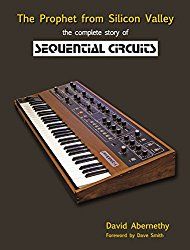
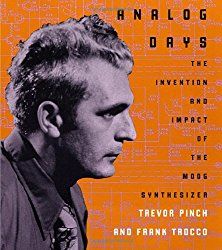
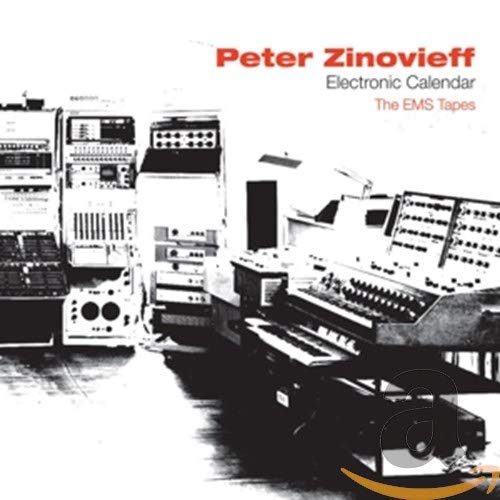
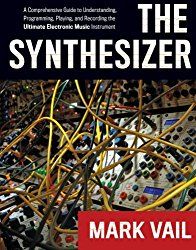
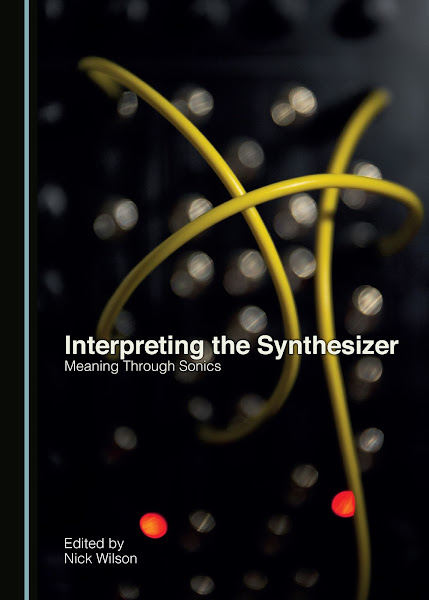
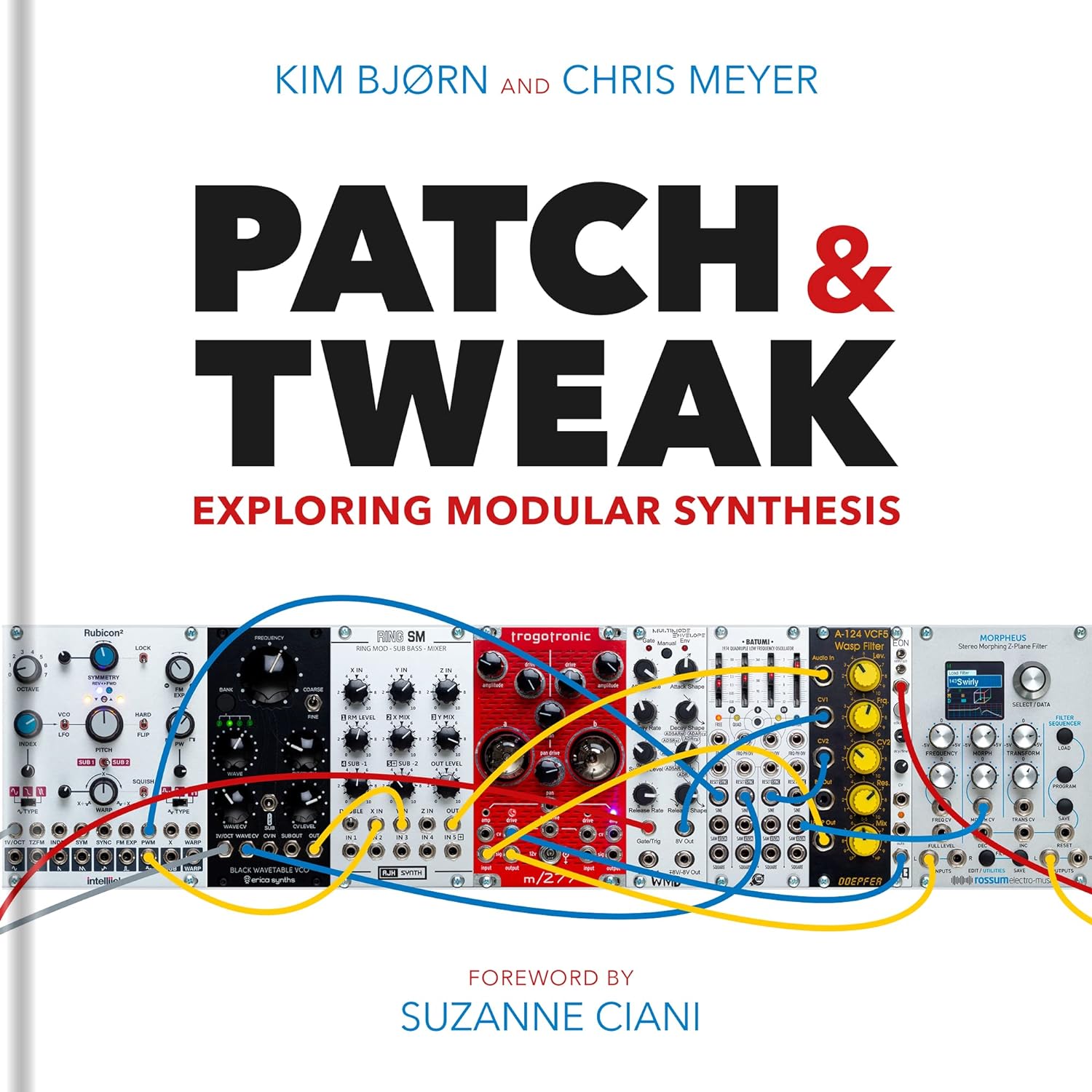

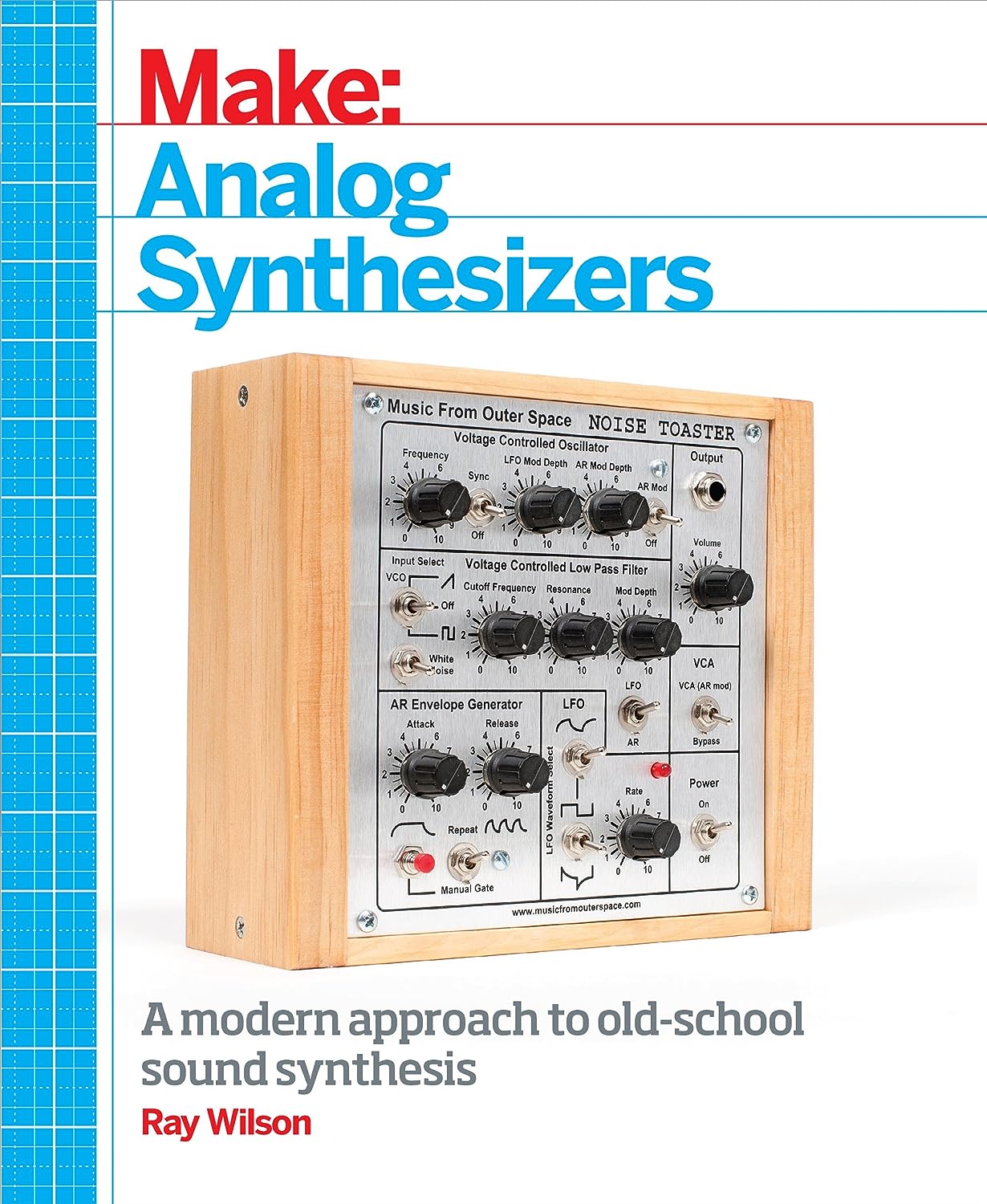
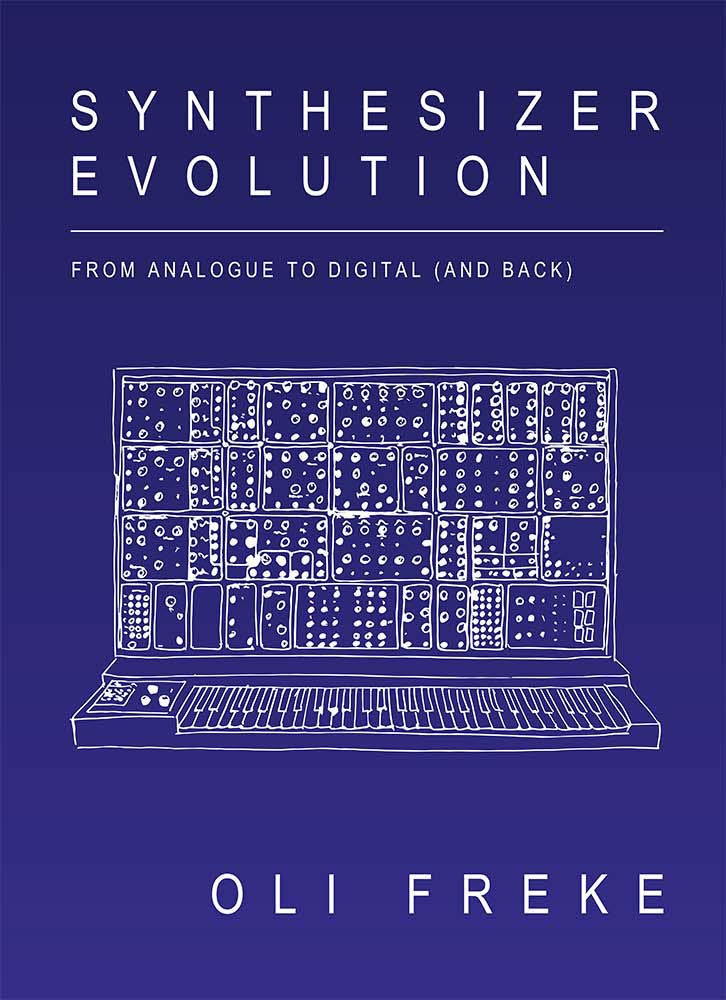
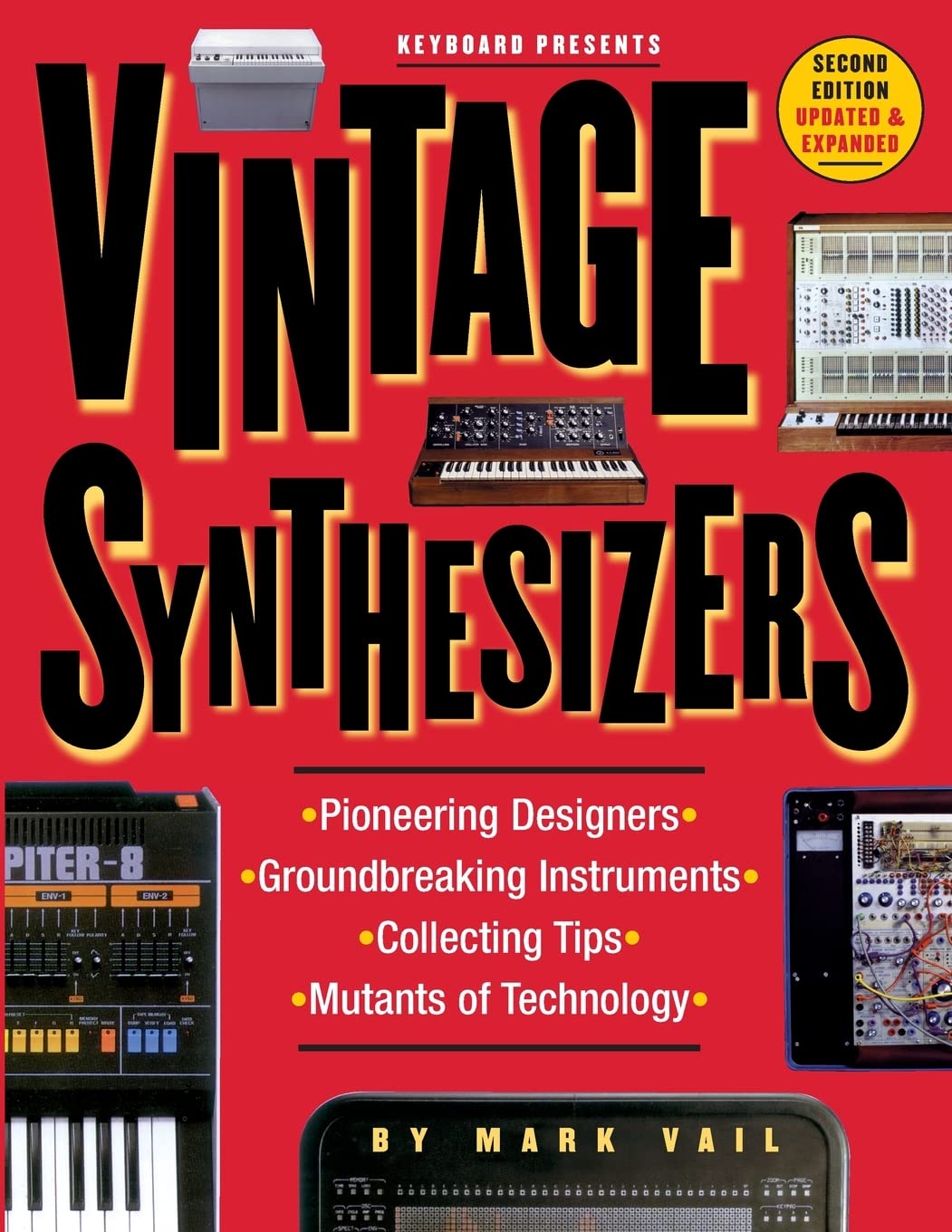
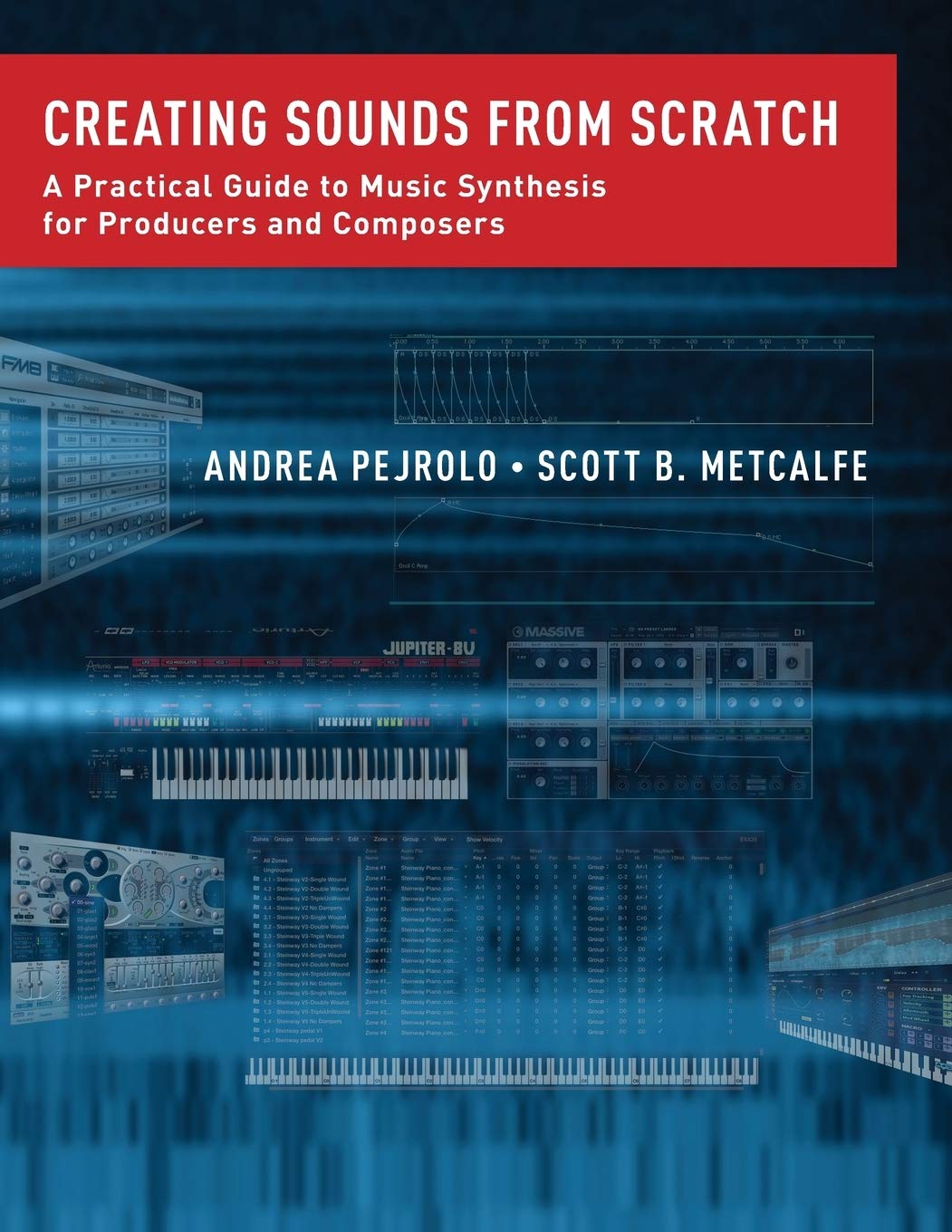
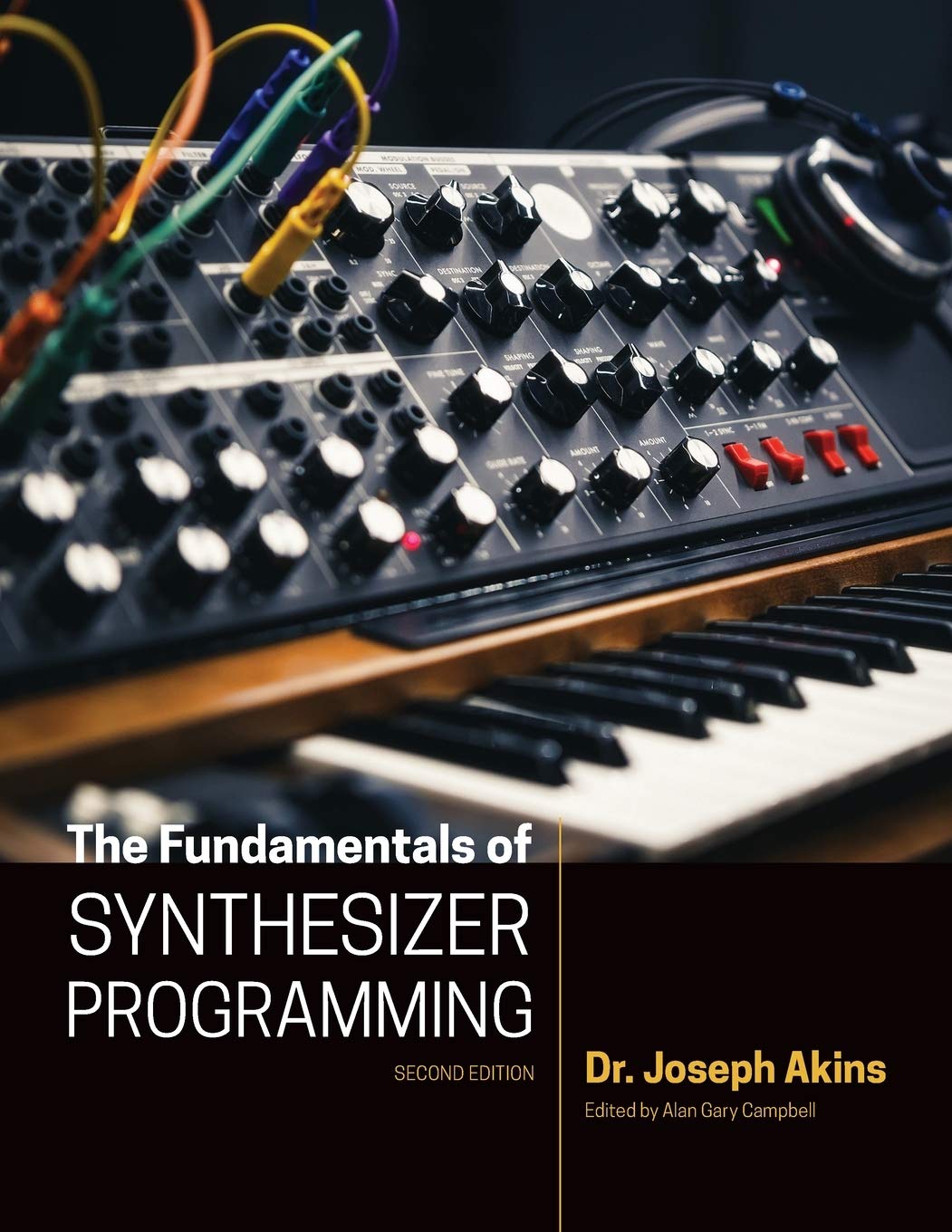

© Matrixsynth - All posts are presented here for informative, historical and educative purposes as applicable within fair use.
MATRIXSYNTH is supported by affiliate links that use cookies to track clickthroughs and sales. See the privacy policy for details.
MATRIXSYNTH - EVERYTHING SYNTH













© Matrixsynth - All posts are presented here for informative, historical and educative purposes as applicable within fair use.
MATRIXSYNTH is supported by affiliate links that use cookies to track clickthroughs and sales. See the privacy policy for details.
MATRIXSYNTH - EVERYTHING SYNTH

















